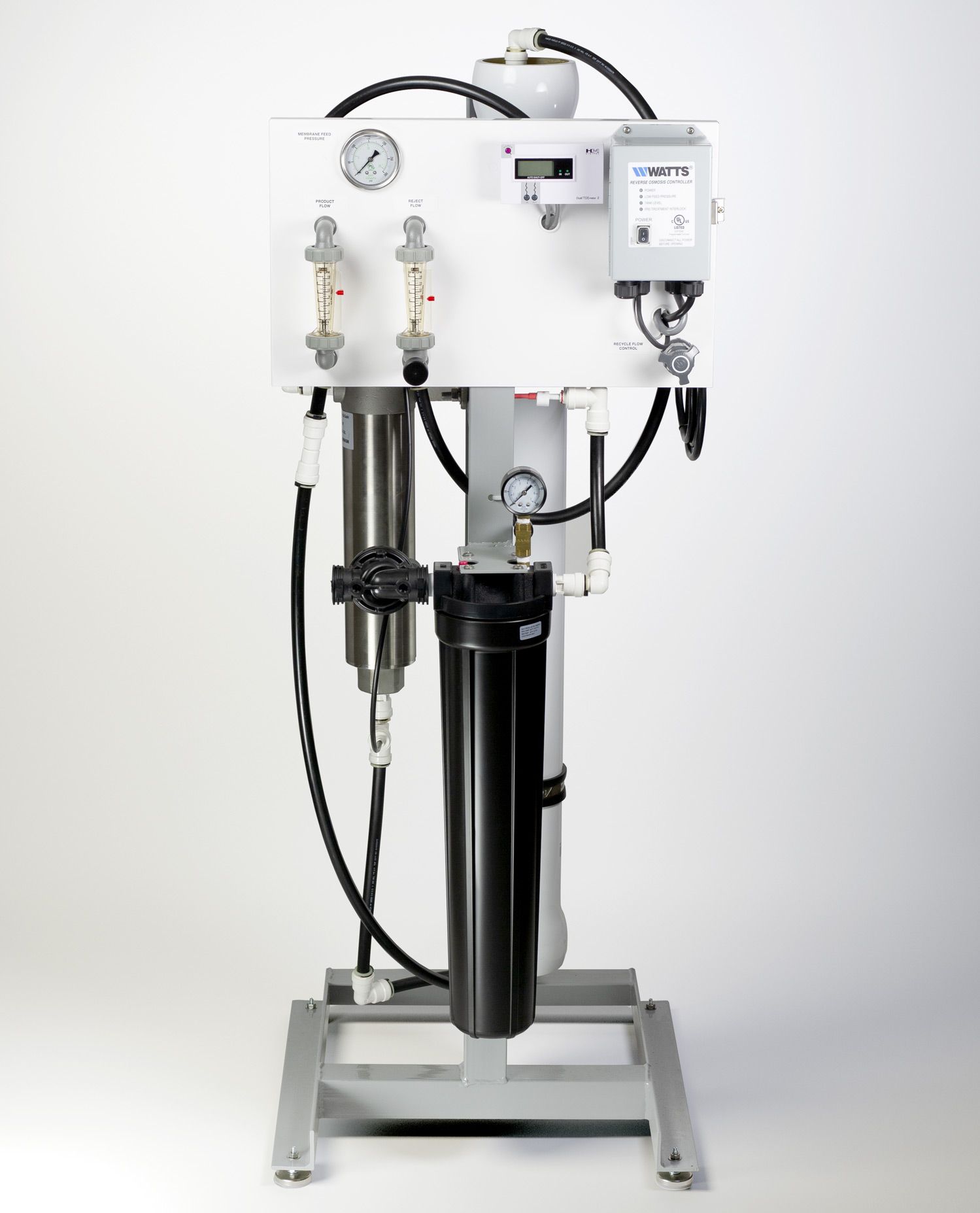Whole House RO Is More Than An RO Unit
Think of residential whole house reverse osmosis as a three part system:
- Pre-treatment to protect the RO unit.
- The RO unit itself.
- Post-Treatment to store the water and send it to the point of use.
Pre-treatment for well water is most commonly needed for iron, manganese, sediment, and hardness. For city water that is chlorinated or treated with chloramine, the disinfectants must be removed. City water may also need treatment for hardness. Iron and manganese normally require an iron filter, but in small amounts they can be treated with a water softener. Sediment filtration should be down to a least five microns. Hardness can be treated with a conventional water softener or with chemical injection. With high amounts of hardness and with water with high sodium content, chemical injection to protect membranes from hardness scaling is preferred to softening.
The RO unit itself should be sized to meet the demand of the home. Normally, even if the theoretical water use is 200 gpd or less, an RO unit smaller than 600 gpd should not be considered. Keep in mind that low water temperature and high dissolved solids readings will significantly lower RO output. For water savings, multi-membrane systems are more economical than single-membrane units.
Post-treatment. Whole house RO units usually produce into a non-pressurized storage tank, so a pump will be required to move the water into the home. Regardless of the pH of the water entering the RO unit, the product water will normally be acidic, so it is standard practice to include a neutralizing tank with a mineral like calcite to boost the pH. A final carbon filter to polish taste and odor is often used, as is an ultraviolet lamp to assure that the water is free of bacteria.
 A single-membrane 2200 gallon per day RO unit with sediment prefilter. Pre- and Post-treatment for hardness, iron, manganese, pH, and bacteria are not part of the RO unit itself. This is a straightforward RO unit that includes gauges for inlet water pressure and post-pump pressure, a TDS tester, flow meters to measure gpm flow of both the brine (reject water) and the permeate (treated water). Simple manual control knobs regulate the brine flow and the amount of brine that is recycled through the unit.
A single-membrane 2200 gallon per day RO unit with sediment prefilter. Pre- and Post-treatment for hardness, iron, manganese, pH, and bacteria are not part of the RO unit itself. This is a straightforward RO unit that includes gauges for inlet water pressure and post-pump pressure, a TDS tester, flow meters to measure gpm flow of both the brine (reject water) and the permeate (treated water). Simple manual control knobs regulate the brine flow and the amount of brine that is recycled through the unit.




